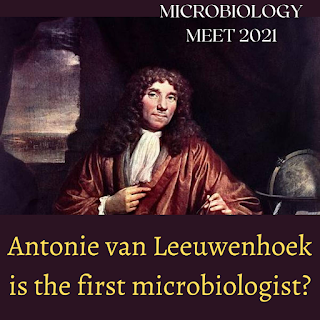Antonie van Leeuwenhoek is the first microbiologist?
Antonie van Leeuwenhoek (1632–1723): The First Microbiologist.
Just as being the father of microbiology,
van Leeuwenhoek established the frameworks of plant life systems and turned
into a specialist on creature proliferation. He found platelets and
infinitesimal nematodes, and examined the design of wood and precious stones.
He additionally made more than 500 magnifying instruments to see explicit
items.
Antonie van Leeuwenhoek was brought into the world in Delft
on 24 October 1632. In 1648, van Leeuwenhoek was apprenticed to a material
vendor, which is the place where he presumably first experienced amplifying
glasses, which were utilized in the material exchange to check string densities
for quality control purposes. Matured 20, he got back to Delft and set himself
up as a cloth draper. He flourished and was named chamberlain to the sheriffs
of Delft in 1660, and turning into an assessor nine years after the fact.
In 1668, van Leeuwenhoek paid his sole visit to London,
where he most likely saw a duplicate of Robert Hooke's 'Micrographia' (1665)
which included pictures of materials that would have been important to him. In
1673, he announced his first perceptions - honey bee mouthparts and stings, a
human mite and a growth - to the Royal Society. He was chosen an individual
from the general public in 1680 and proceeded with his relationship for the
remainder of his life by correspondence. In 1676, van Leeuwenhoek noticed water
intently and was astonished to see small creatures - the principal microorganisms
saw by man. His letter reporting this revelation caused boundless uncertainty
at the Royal Society however Robert Hooke later rehashed the trial and had the
option to affirm his disclosures. Just as being the dad of microbiology, van
Leeuwenhoek established the frameworks of plant life structures and turned into
a specialist on creature multiplication. He found platelets and minute
nematodes, and considered the construction of wood and gems. He likewise made
more than 500 magnifying lens to see explicit articles.
He likewise found sperm, which he thought about perhaps the
main disclosures of his profession, and portrayed the spermatozoa from
molluscs, fish, creatures of land and water, birds and vertebrates, arriving at
the novel resolution that preparation happened when the spermatozoa infiltrated
the egg.



Comments
Post a Comment